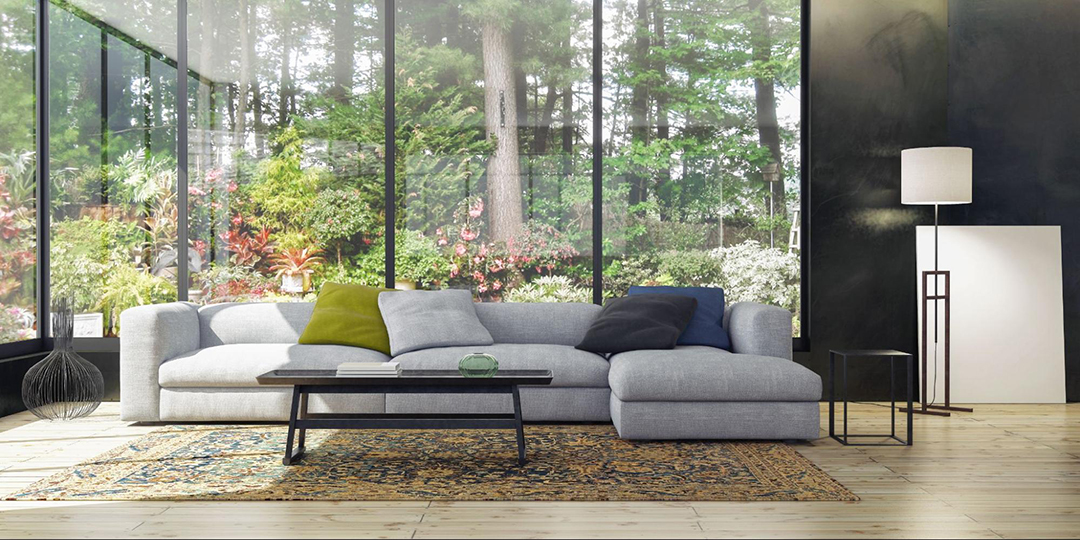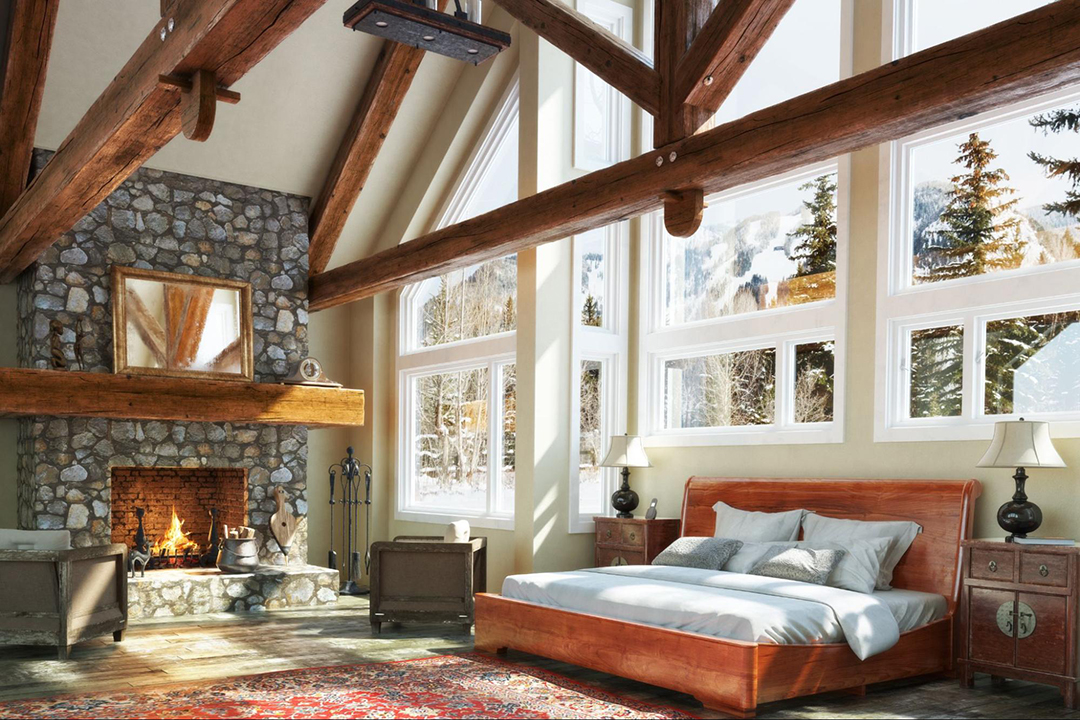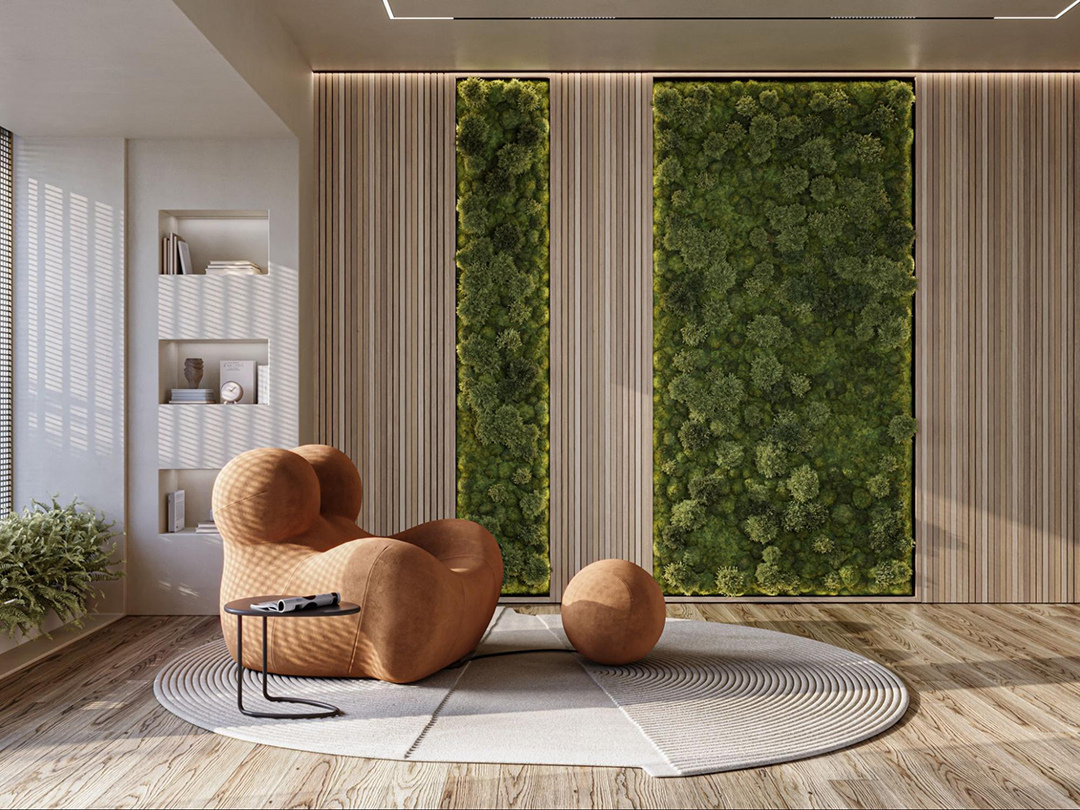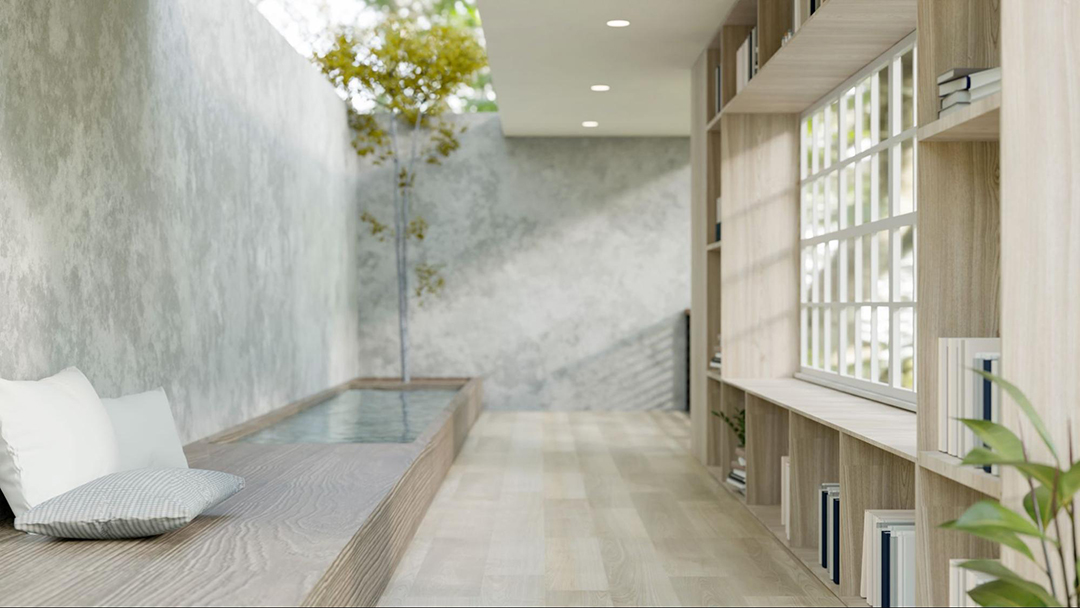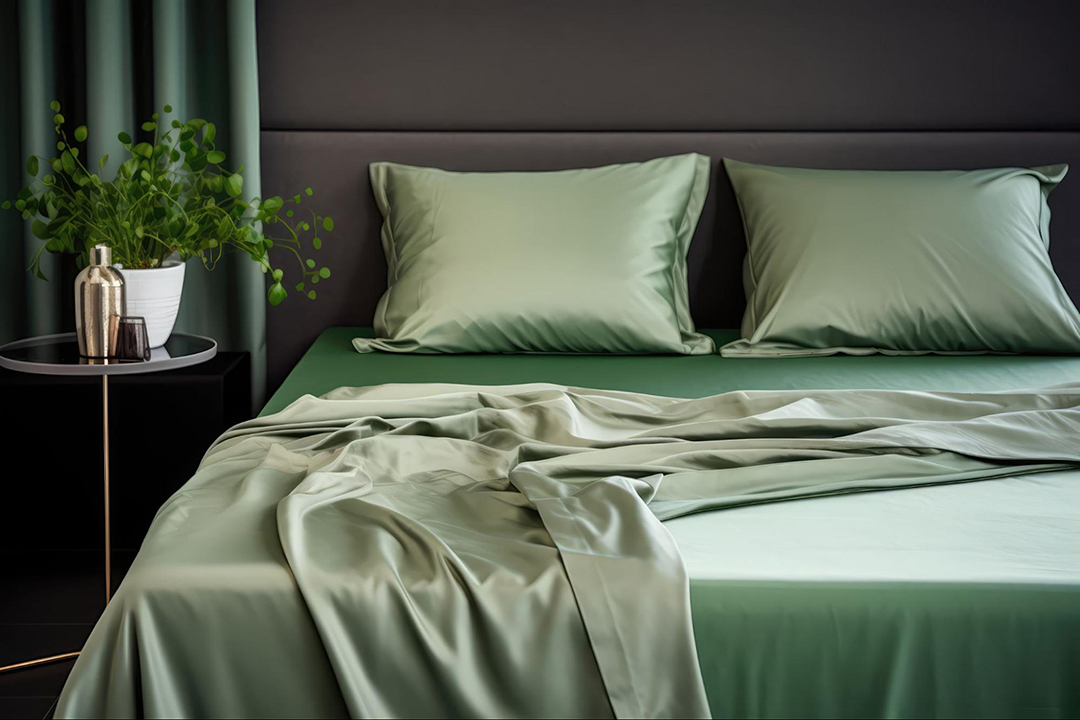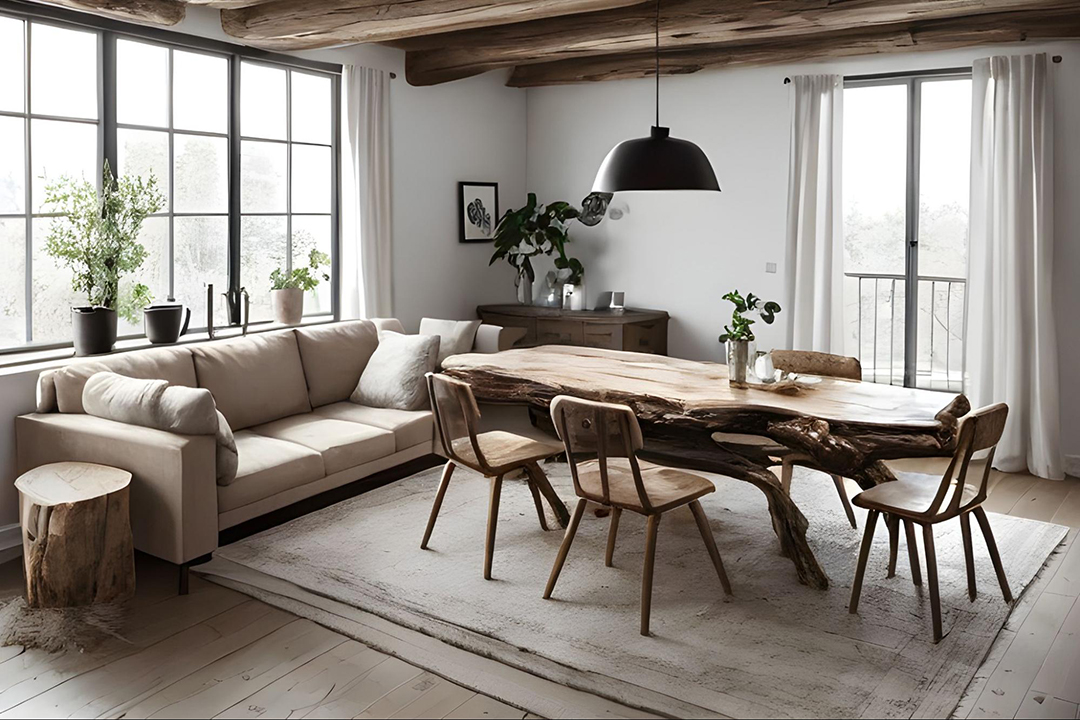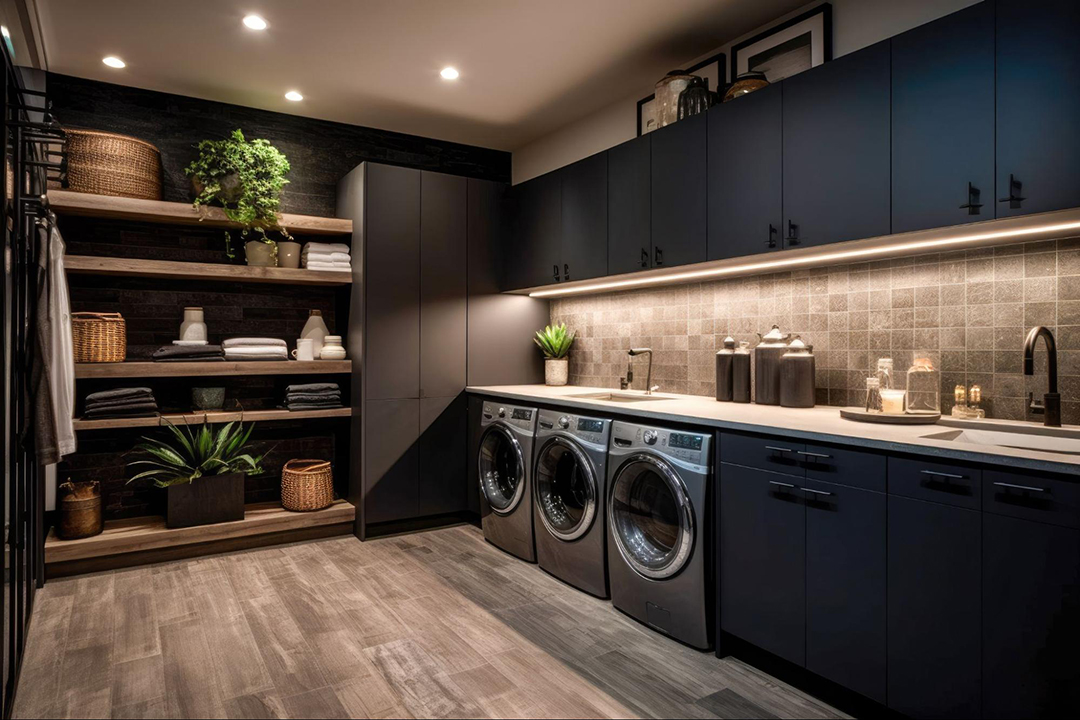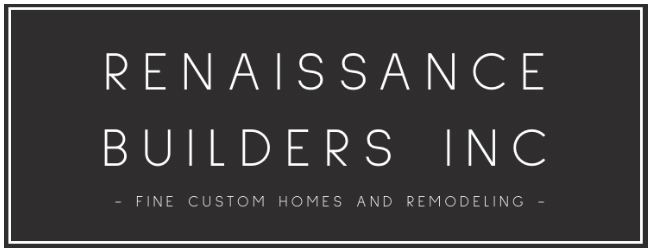The beauty of nature has always been a significant source of inspiration in various aspects of our lives, from art and fashion to architecture and interior design. Today, as we strive for sustainable and environmentally friendly solutions, the significance of integrating natural elements into our homes becomes even more evident. Beyond the aesthetic appeal, there’s a genuine, deep-rooted human need to connect with nature, often referred to as “biophilia”.
Before diving into the specifics, it’s crucial to understand the underlying concept of biophilic design. At its core, biophilia implies love for life and the living world. When applied to architecture and interior design, biophilic design seeks to connect building occupants more closely to nature. This not only enhances aesthetics but also boosts mood, well-being, and even productivity.
In this blog, we’ll explore how you can seamlessly incorporate nature into your custom home design and its benefits.
Natural Light
In the heart of the Midwest lies Minnesota, known affectionately as the ‘Land of 10,000 Lakes’. Its landscape is a medley of lakes, forests, and open fields, with each season painting a distinct canvas of colors and experiences. The importance of integrating natural light into your custom home design can’t be overstated. This isn’t just about aesthetics; it’s about crafting spaces that breathe, spaces that bring the outside in.
One of the most captivating ways to celebrate Minnesota’s vast landscapes is by installing large panoramic windows, especially in spaces like living rooms or lounges where families often gather. These expansive windows serve as live canvases, showcasing a shifting array of natural vistas–be it the shimmer of lake under the summer sun or the serene fall of snow in winter. Beyond just being visual treats, such windows minimize the reliance on artificial lighting during the day, leading to noticeable energy savings.
Nothing beats the charm of a sunroom or a solarium. These spaces, predominantly built using glass, become sun-drenched havens even during the chilliest of days. They can be your reading room, your personal greenhouse, or just a cozy corner to sip on some hot cocoa while the world outside is draped in snow. Their inherent design, which captures sunlight aplenty, means they can also serve as passive solar heaters, channeling warmth into the home and reducing heating costs.
It’s not just about how much light enters a space but also how it’s distributed. Light shelves, which are horizontal surfaces placed externally or internally near windows, catch and reflect daylight deep into a room. Complement these with reflective surfaces such as pale-colored walls or specific tiles, and you have a home that basks in an even distribution of sunlight, reducing stark shadows and maximizing the sense of spaciousness.
Organic Materials
Beyond the visual aesthetics, there’s a growing trend in custom home designs that leans heavily into the use of organic materials. This shift isn’t just about capturing the essence of Minnesota’s landscape; it’s about cultivating a home environment that feels authentic, sustainable, and harmonious with its surroundings.
One of the most cherished organic materials in Minnesotan home designs is wood. Given the state’s vast wooden areas, it’s no surprise that timber has become a material of choice for many. Hardwood floors, crafted from oak or maple, offer warmth and durability. They age gracefully, their grains and textures telling tales of years gone by and promising resilience for years to come. Beyond flooring, exposed wooden beams can lend a rustic charm to living spaces, a gentle nod to the traditional cabins sprinkled around Minnesota’s many lakes.
Stone, another gift from Minnesota’s varied landscapes, serves as an emblem of strength and timelessness in custom homes. Granite countertops, sourced locally, provide not just a robust and heat-resistant kitchen workspace with their unique patterns and colors. Furthermore, limestone or slate can be used for fireplace surrounds, creating cozy hearths that become the focal point of family gatherings during the frosty winter months.
Beyond the obvious aesthetic appeal, these organic materials come with a suite of benefits that enhance the quality of life in such homes. They offer superior air quality, as natural materials often have fewer volatile organic compounds (VOCs) than their synthetic counterparts. Their inherent insulating properties, especially wood and stone, provide a more energy-efficient home, leading to both cost savings and a reduced carbon footprint. Moreover, by opting for locally sourced materials, you support local industries and reduce the environmental impact associated with transporting materials over long distances.
Indoor Plants and Vertical Garden
Capturing the lush essence within the walls of a home adds not just beauty but vitality. One of the most direct ways to intertwine the serenity of nature with the sophistication of custom home designs in Minnesota is through the introduction of indoor plants and vertical gardens.
Minnesota’s distinct seasons present an exciting challenge for homeowners. During the colder months, when the world outside may be wrapped in a blanket of snow, the interiors can remain verdant and full of life with the right selection of indoor plants. Take, for instance, the fiddle leaf fig, with its broad, glossy leaves; it stands tall and demands attention in a living room. Or consider the snake plant, a resilient piece of green that not only thrives in low light but also purifies the air, making it a perfect companion for bedrooms.
But it’s not just standalone plants that can transform a space. Imagine a cascade of hanging plants, like string-of-pearls or golden pothos, draped from ceiling fixtures or lining the tops of bookshelves, their tendrils descending gracefully, introducing motion and a touch of the wild.
Vertical gardens, on the other hand, are artworks in themselves. Taking advantage of vertical space, these gardens become living walls. Incorporating a blend of ferns, mosses, and even flowering plants, a vertical garden can be the backdrop of a home office, infusing calm and inspiration into workdays. For kitchens, culinary vertical gardens featuring herbs like basil, rosemary, and mint can be both functional and visually appealing.
And there’s more to these gardens and plants than meets the eye. The benefits of integrating such living entities into a home are manifold. First and foremost, plants are known as air purifiers. They absorb pollutants and release oxygen, making the indoor air fresher and healthier. This is particularly beneficial during Minnesota’s colder months when homes are often sealed tight, limiting the influx of fresh air.
Moreover, indoor plants and vertical gardens offer therapeutic value. The act of tending to plants, watering them, and watching them grow is grounding, providing homeowners a chance to nurture and connect with life. There’s a serenity, a mindfulness that comes with this connection, reducing stress and enhancing overall well-being.
Water Features
Minnesota, with lakes, rivers, and waterfalls, is intrinsically tied to the element of water. It’s only fitting that custom homes in this state find inspiration in this connection, integrating water features to enhance both the design and ambiance of their interiors.
Indoor water features can vary in scale and complexity, but each brings with it a touch of the outdoors. Consider the elegance of a floor-to-ceiling indoor waterfall in a grand entryway. As visitors step into the home, they’re greeted by the gentle cascade of water, it’s sound muffling the noise of the outside world and creating an instant sanctuary. Such waterfalls, often with backlit designs, can shimmer under the evening lights, become dynamic art pieces.
Another increasingly popular choice is indoor ponds and streams. These can be particularly striking in open-plan homes, where a meandering stream might flow between living and dining areas, perhaps dotted with a few aquatic plants or even fish. Incorporating natural stones and pebbles, these features can be both visual and tactile delight, especially when coupled with strategically placed footbridges or stepping stones.
But beyond the undeniable aesthetic appeal, integrating water features offers wealth of benefits. The sound of flowing water is universally recognized for its calming properties. It can mask external noises, such as traffic, creating an oasis of calm even in bustling neighborhoods. Water features also play a role in regulating indoor humidity. Especially during Minnesota’s cold winters, when indoor heating systems can make the air dry, a water feature can introduce much-needed moisture, making the environment more comfortable for both residents and indoor plants.
Natural Textiles and Textures
One of the subtler, yet profoundly impactful ways to incorporate Minnesota’s natural beauty into the heart of a custom home is through the use of natural textiles and textures. This approach is less about grand statements and more about creating an ambiance, an underlying warmth that speaks of nature’s intricate design.
The beauty of textiles lies in their versatility. Linen, for instance, evokes simplicity and elegance. This breathable fabric, often in its natural beige or off-white tones, can grace custom homes in the form of drapes, cushion covers, and even upholstery. It lets in just the right amount of sunlight, creating an airy atmosphere reminiscent of Minnesota’s open fields during summertime.
Wool, another gem, is synonymous with warmth and coziness. In a state known for its chilly winters, what could be more inviting than a plush woolen rug underfoot or a throw on the sofa? Wool, especially when retained in its natural, undyed state, offers a direct link to the pastoral landscapes, with each fiber telling tales of open pastures and roaming sheeps.
Silk and cotton, though more delicate, have their unique places in a Minnesota custom home. While silk, with it’s lustrous finish, can introduce a touch of luxury in the form of decorative cushions or beddings. Cotton, particularly in its raw or organic form, offers a rustic charm, especially when employed as bed linens or tablecloths.
Beyond textiles, natural textures play a pivotal role in setting a home’s ambiance. Think of the rough, tactile quality of a stone fireplace, each stone uniquely shaped by nature’s forces, standing as a testament to Minnesota’s rugged terrains. Or the intricate grain of a hardwood floor, sourced from the state’s abundant forests, its patterns narrating tales of growth and seasons passed.
The benefits of integrating natural textiles and textures into a custom home design are profound. On a sensory level, these elements introduce a depth of experience. The coolness of a stone countertop, the soft embrace of a linen curtain, or the warmth of a woolen blanket; each evokes a different emotion, a distinct memory of nature. Furthermore, natural textiles and textures contribute to a healthier living environment. They often have fewer synthetic components and treatments, leading to a reduction in potential allergens and pollutants in the home. They’re often more breathable, ensuring better air quality and comfort.
Organic Shapes and Patterns
Beyond traditional incorporations of nature, such as plants or water features, lies the realm of organic shapes and patterns, subtle yet poignant echoes of the world outside. For the custom homes of Minnesota, these designs are a harmonious bridge between the architectural rigor of a house and the free-flowing curves of nature.
Organic shapes and patterns find their roots in nature’s irregularities. Unlike the strict geometry of most man-made structures, organic designs take cues from the undulating curves of riverbanks, the random scatter of leaves in the wind, or the asymmetry of tree branches reaching for the sun. In the context of a Minnesotan home, these forms manifest in various nuanced ways.
Imagine a living room where the central coffee table isn’t a perfect rectangle but mimics the shape of a lake, with its curvilinear edges. Or consider a bedroom wallpaper that doesn’t adhere to strict line and geometries but emulates the meandering paths of Minnesota’s many rivers and streams.
Architecturally, these organic designs can manifest as curvaceous staircases, reminiscent of rolling hills, or uniquely shaped windows that don’t confine views within rectangles but allow them to spill in, much like sunlight through a canopy of leaves. Kitchen countertops might abandon the straight edge for a design inspired by the irregularity of a rock’s edge or the gentle curve of a shoreline.
The benefits of infusing a custom home with organic shapes and patterns go beyond aesthetics. On a subconscious level, these forms, which lack the rigidity of straight lines and sharp angles, create an atmosphere of relaxation and comfort. They’re softer on the eyes and evoke a sense of natural flow, making spaces feel more open, breathable, and less confined. Moreover, patterns inspired by nature can have a grounding effect. In a world dominated by technology and screens, a wall pattern reminiscent of tree bark or a rug design echoing the spread of a fern can provide a tactile and visual return to nature, serving as a gentle reminder of the world outside.
The timeless allure of nature is more than just a backdrop to our lives; it’s an intrinsic part of who we are. In the ever-evolving sphere of custom home design, especially in the picturesque state of Minnesota, nature emerges not as an afterthought but as the very heartbeat of a home’s essence. Through the integration of natural light, organic materials, indoor plants, water features, natural textiles, and organic patterns, we find a holistic approach to embedding nature’s magic into our living spaces.
Beyond the aesthetics, the harmonious fusion provides a plethora of functional benefits, from energy efficiency to improved well-being. But perhaps most importantly, such designs resonate with our innate biophilia, our deep seated love for life and nature. As the world speeds ahead, finding moments of serenity and connection within our homes becomes not just desirable but essential. And what better muse to guide this journey than nature itself?
Minnesota’s breathtaking landscapes deserve a home design that complements their beauty. At Renaissance Builders, we don’t just construct houses; we also weave the essence of nature into every space we touch. From custom homes built from the ground up to thoughtful remodels that transform your current home into a Minnesota-inspired haven, our team is dedicated to turning your dream home to reality.
Don’t settle for ordinary. Elevate your living experience with a home that’s not only built to your specifications but also echoes the heart and soul of Minnesota. Reach out today, and let’s bring your dream home to life!

